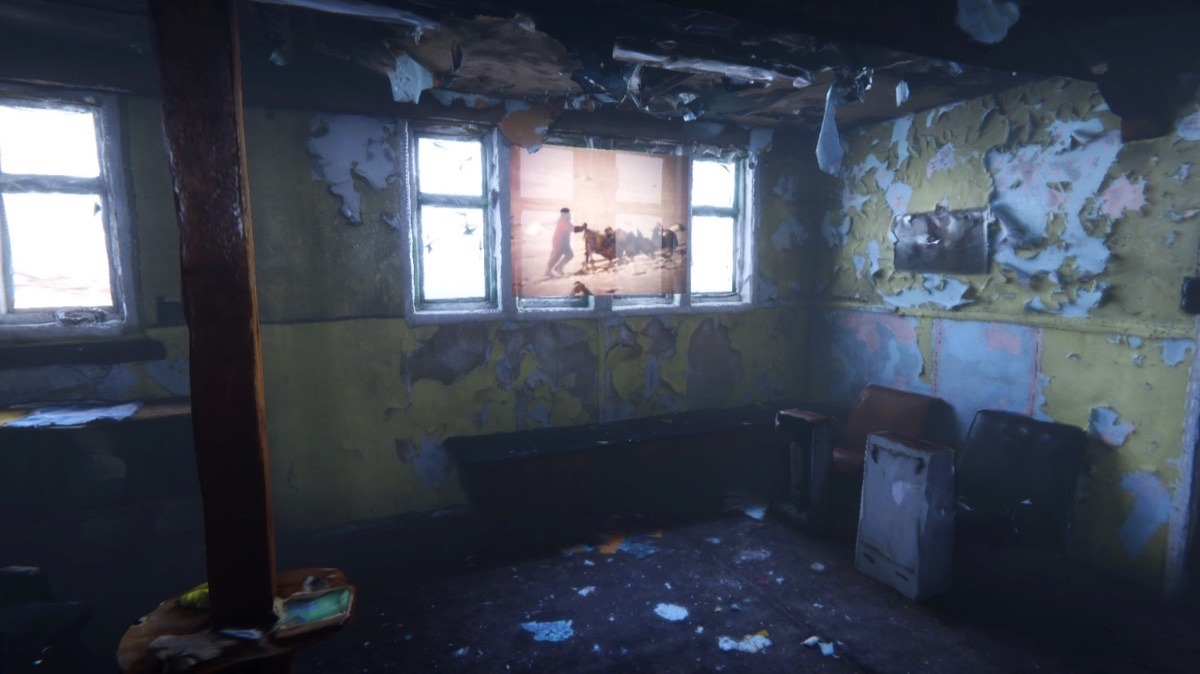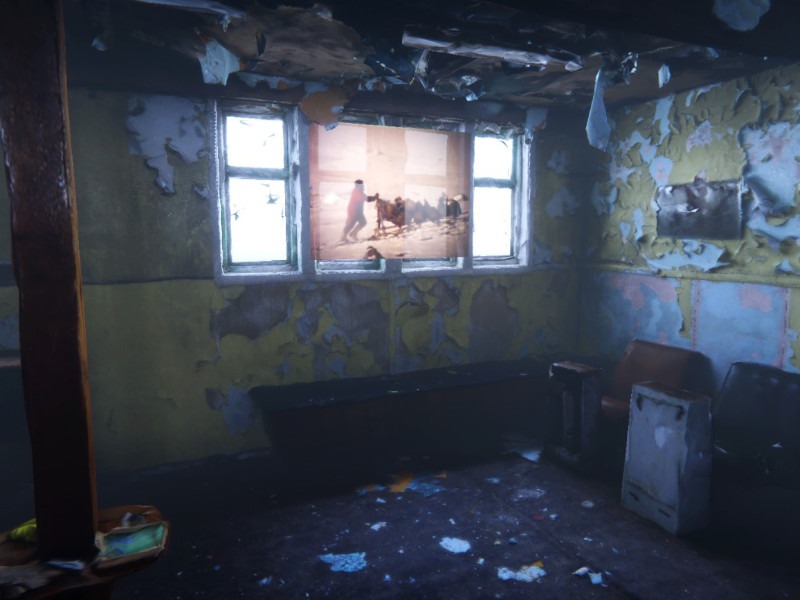Collaboration between UK Antarctic Heritage Trust, British Antarctic Survey and StoryLab

Base E is a proof of principle interactive Virtual Reality (VR) experience that combines 3D visualisation, gaming and film archive that enables users to explore and engage with the story of Base E, a British research station based on Stonington Island, in the south Antarctic Peninsula. This collaboration between StoryLab and the UK Antarctic Heritage Trust (UK AHT) aims to demonstrate how convergent creative modes of storytelling enable a more diverse and immersive experience for audiences to connect and engage with remote and inaccessible areas of the world. This reflects on the intersection between identity, culture, heritage and the environment.
A 3D photogrammetry model of Base E was created by UK AHT for the purpose of preserving and promoting the physical heritage of this incredible example of human endeavour in Antarctica. The base was established in 1946 as a station for sledging operations in the area. It was closed in 1950 as sea ice conditions had prevented access to relieve the station in 1949. The site was designated as Historic Site No.64 under the Antarctic Treaty in 1955. It was reopened in 1960 as the centre for eld work in this region before permanently closing in 1975, and has been under the management of UKAHT since 2014 under a Memorandum of Understanding (MoU) with the British Antarctic Survey.
This 3D mesh model of Base E was simplified and integrated into a game engine platform (Unity3D), and used for the development of an interactive and multimodal VR application. The experience of ‘Virtual’ Stonington was enriched by the creation of multimodal narratives developed using the archive film preserved by the British Antarctic Service (BAS). This is part of a collection that holds records relating to scientific, administrative and logistical operations carried out in the Polar regions.
The on-going collaboration between StoryLab and UK AHT investigates the role of interactive narratives and 3D visualisation to:
- inform and inspire global audiences with the rich archive preserved by UKAHT;
- bring the data and the causes that impact climate change to life;
- drive engagement and action of individuals, organisations and governments, in line with the UN’s Sustainable Development Goals for 2030.

